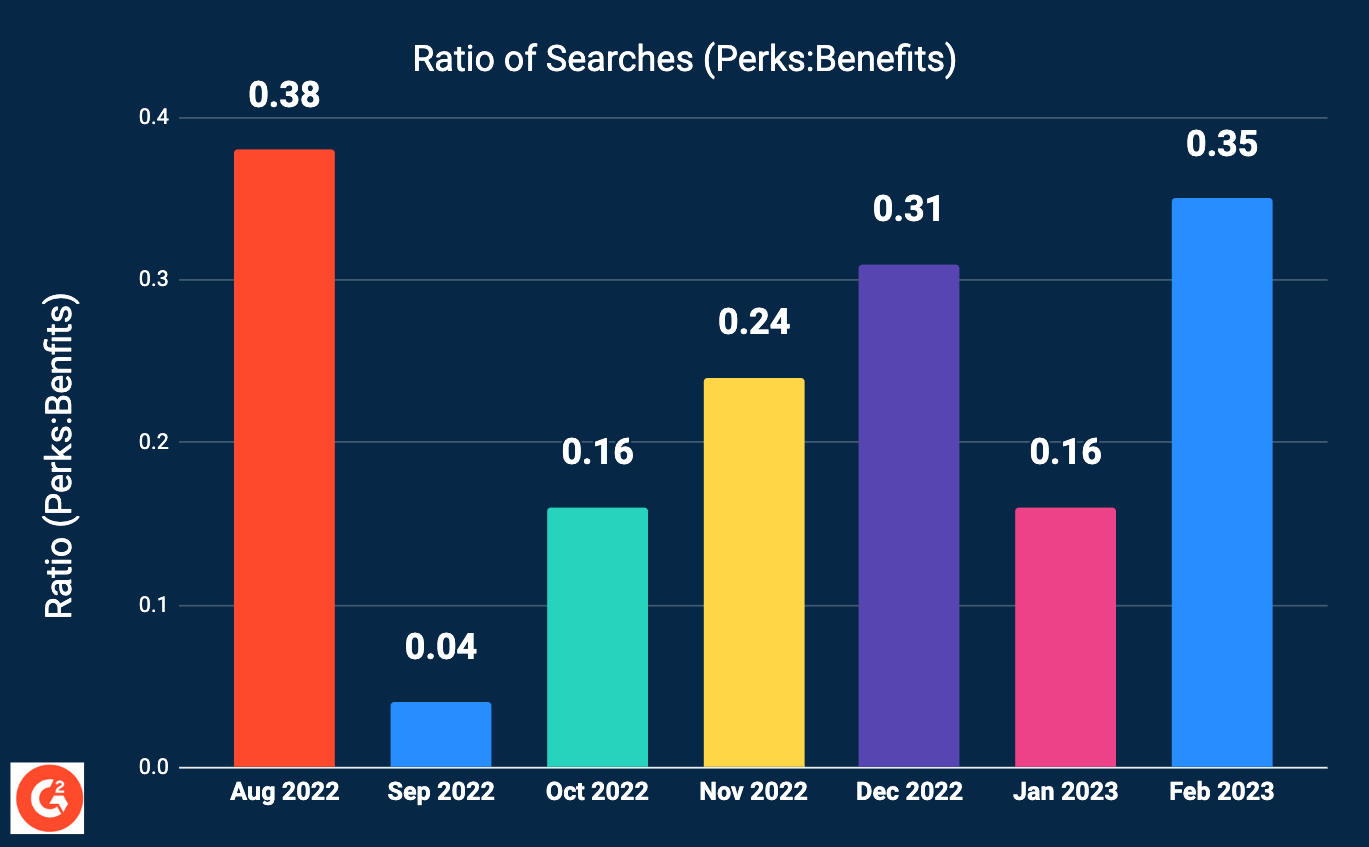When most people hear of job perks, our imaginations can conjure up ideas of free food, electric scooters, company swag, tuition reimbursement, and game rooms. These perks can be seen as eccentric and are associated with the tech industry like Google or Facebook.
There are entire campuses where company perks are interwoven into the work environment to maximize employee engagement. With many companies opting to provide various perks to their employees, G2 is updating its taxonomy to include a category for Employee Perks Software.
Separating employee perks from benefits administration
The number and types of employee perks available to businesses have expanded in the last few decades. In addition to this rapid expansion, the differentiation between benefits and perks led to the creation of the Employee Perks category. This category will house products dedicated to administrating, organizing, and providing perks to company employees.
What is Employee Perks Software?
Employee perks software focuses on administering and managing fringe benefits like food vouchers, equity, tuition reimbursement, etc. With employee perks solutions, the inclusion of these perks will be more modular and can be adopted or removed with much less administrative hassle.
Since the purpose and function of employee perks vary greatly, categorization is based on product features that focus on products outside of those normally associated with employee benefits.
But are perks the same as employee benefits? If not, what is the difference between a benefit and a perk?
The simplest and fastest way to distinguish between a perk and a benefit is that benefits are expenses paid for by the employer in addition to regular wages. Many of these benefits are written into the employment contract after recruitment.
Industry-standard employee benefits include:
- Health insurance
- Family and medical leave (FMLA)
- Disability insurance
- Retirement savings (401k)
- Life insurance
- Paid time off (PTO)
Perks, commonly known as fringe benefits, are not guaranteed and are regularly used by employers to differentiate themselves from their competitors. They are incentives on top of the salary and are used heavily in the hiring process to make themselves the most appealing option. Many can be experiential, like wellness programs, on-site game rooms, off-site team-building activities, campus shuttle services, etc. Other perks can be more financially focused, like tuition reimbursement, unlimited PTO, remote work, and stock options (which is very common for tech startups).
How are perks used?
For HR departments, perks must be seen as part of the problem-solving kit for work population issues. Depending on where a business is located, some problems may require direct business intervention to resolve issues plaguing the employee experience or hindering employee productivity. These barriers include location, transportation, culture, communication, diversity, equity, and inclusion (DEI).
Perks serve an important function in maintaining and improving company culture and resilience. For example, DEI initiatives are critical for business success and longevity because they need their workforce to be leaders in innovation and creativity. Off-site exercises allow employees to express themselves outside of the work setting, which can help minorities feel less pressured to conform. Game rooms, free dinners, and ping pong tables increase team interaction and resilience as a stress outlet for teams working overtime. Perks are best applied with a culturally strategic objective by actively cultivating or discouraging certain cultural trends.
The modular design of many perks means it can be adopted and removed easily so that HR departments can respond to culture shifts decisively. Finally, performance-based rewards encourage desirable employee behavior like high performance, authenticity, and kindness by using positive reinforcement.

The chart above shows the ratio of g2.com visitors who searched for perks. For example, there was one search for perks for every three searches for benefits in February, 2022. It is a measure of interest for perks-related software compared to benefits-related software.
What is in store for employee perks software?
The category only contains 10 products but is expected to grow rapidly since the normalization of job perks has expanded in the last decade. There is a trend where many perks focus on providing health and mental wellness support. In a labor-tight job market, perks can be the differentiator between competing job offers. Furthermore, it is also an indicator of company priorities and culture.
Edited by Shanti S Nair
Want to learn more about Employee Perks Software? Explore Employee Perks products.

Jeffrey Lin
Jeffrey is a research analyst at G2 with a focus on Customer Service and HR software. Prior to joining G2, he worked in Human Resources for Amazon. In his free time, he spends time playing video games, exploring cities, and traveling when possible.
